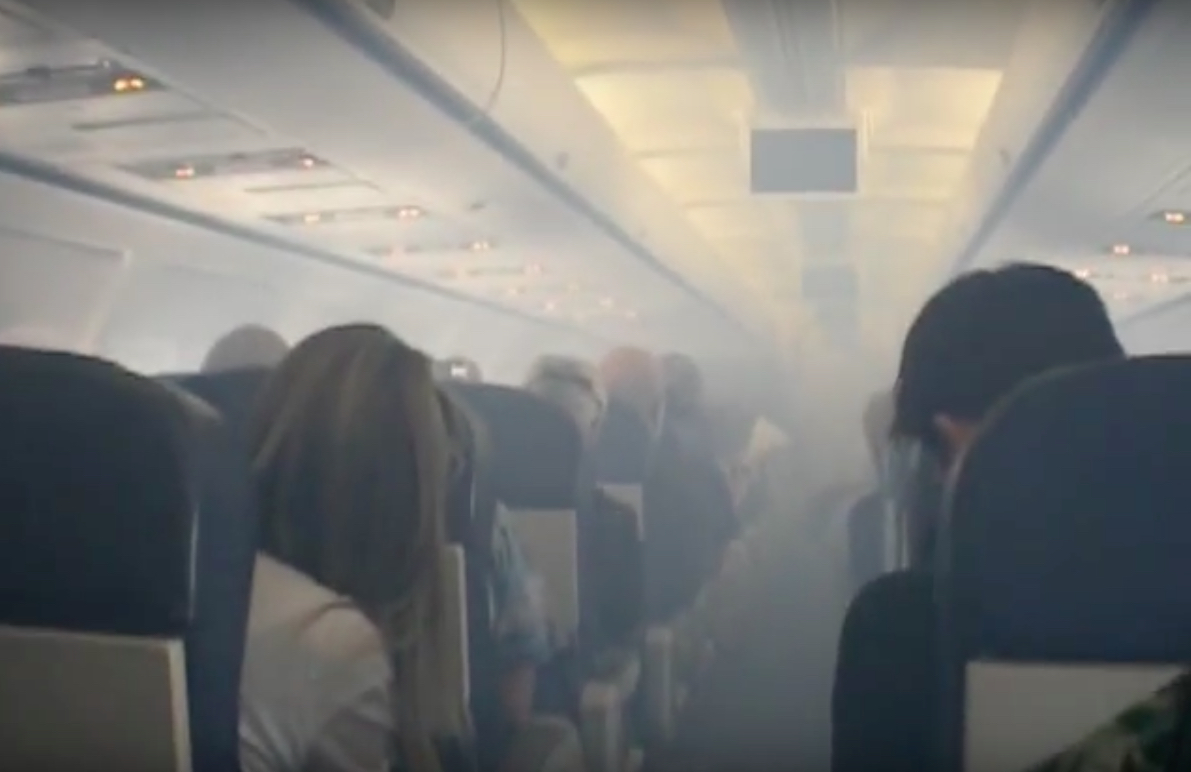
More than 400 passengers and flight attendants aboard U.S.-operated airplanes could have been sickened by “toxic fumes” between January 2018 and December 2019 according to a new investigation by the Los Angeles Times. And around 48 pilots during the same time period were so impaired by breathing in chemical-laced cabin air that they were unable to perform their duties according to data records obtained from a NASA run aviation safety reporting system.
The number of sickened crew members and passengers reported by the Times, however, could be just the tip of the iceberg as the safety reports used to compile the dossier require the crew members involved in each incident to file a voluntary safety report. The Federal Aviation Administration (FAA) doesn’t keep a record so-called ‘smoke, odor or fume’ (SOF) events as they are known in the industry.
Airlines and aircraft manufacturers insist that while SOF events can be unpleasant, there’s no proof that they can sicken passengers or crew. Campaigners, however, say cabin air contaminated with fumes from toxic engine oil can cause serious longterm health issues and neurological conditions, coining the phrase ‘aerotoxic syndrome’.
The medical community is split on whether there really is such a condition as aerotoxic syndrome and medical tests to detect the presence of toxins in sickened passengers and crew are rarely performed after a SOF event.
But despite publicly saying there’s nothing to worry about, some airlines have apparently been so concerned that they’ve privately lobbied for special air sensors to be fitted onboard planes for years. Aircraft manufacturer Boeing, however, decided not to develop the technology because it could lead to a rise in lawsuits over toxic cabin air.
“Flight attendant, pilot unions, and congressional supporters could use this effort as evidence that sensors are needed and … to drive their agenda forward to have bleed air sensors required on all aircraft,” a 2015 Boeing memo reported by the Times read.
The new allegations come at a time that airlines and air manufacturers are on the offensive to prove that cabin air is in fact so safe that it’s almost impossible to catch COVID-19 from an infected seatmate, let alone be taken ill with a mysterious neurological condition.
“The cabin air inside Boeing airplanes is safe,” a spokesperson for the Chicago-headquartered company told the Times. Rival manufacturer Airbus insisted that while unpleasant, odors were ‘t harmful.
Earlier this month, Mary Vincent Randall filed a lawsuit against Spirit Airlines after a “fetid, noxious, burning odour” allegedly caused her serious and permanent injuries following a July 2018 flight from La Guardia to Fort Lauderdale which was forced to divert because of the odor.
Randall was one of several passengers who were hospitalised after experiencing headaches, nausea and breathing difficulties. A Spirit Airlines pilot died several years after a 2015 SOF event with the coroner saying breathing in fumes aboard that plane could have played a part in his death.
Aviation regulators, however, have taken little action to prevent fume events and air sensors that could prevent toxic cabin crew are still no closer to actually becoming a reality.
An earlier version of this story named the incorrect Spirt Airlines pilot. We would like to apologize to the pilot involved and have been reassured that he is very much alive.
Mateusz Maszczynski honed his skills as an international flight attendant at the most prominent airline in the Middle East and has been flying ever since... most recently for a well known European airline. Matt is passionate about the aviation industry and has become an expert in passenger experience and human-centric stories. Always keeping an ear close to the ground, Matt's industry insights, analysis and news coverage is frequently relied upon by some of the biggest names in journalism.








I think this issue dates back further. I remember US Airways flight crews over the Atlantic having issues prior to the AA merger.